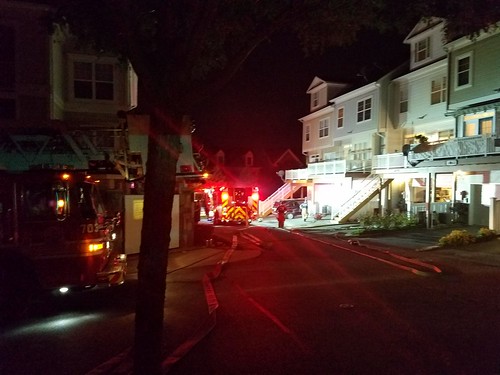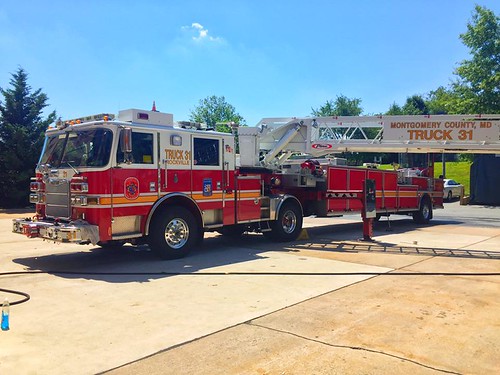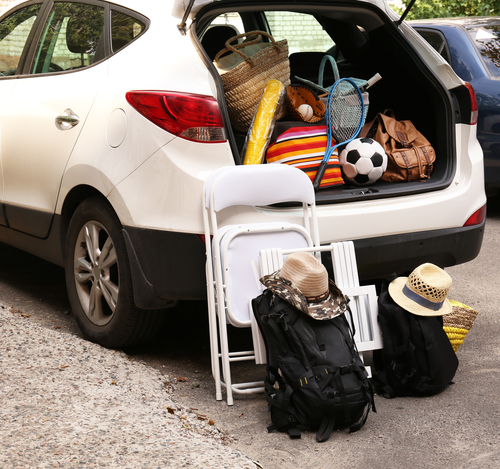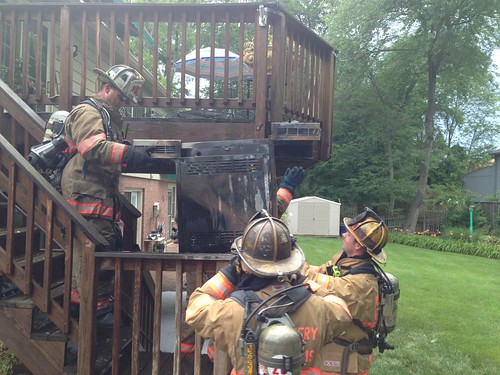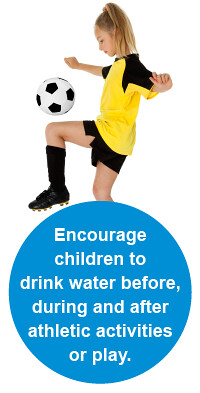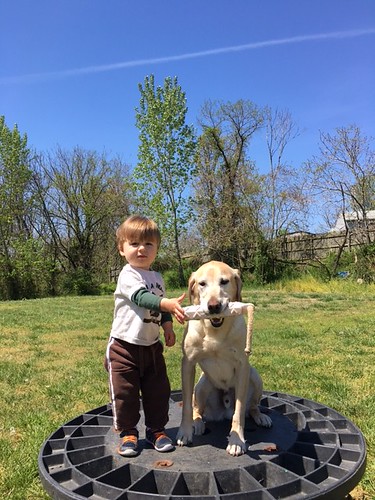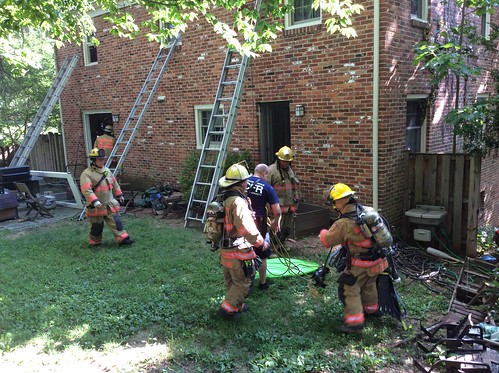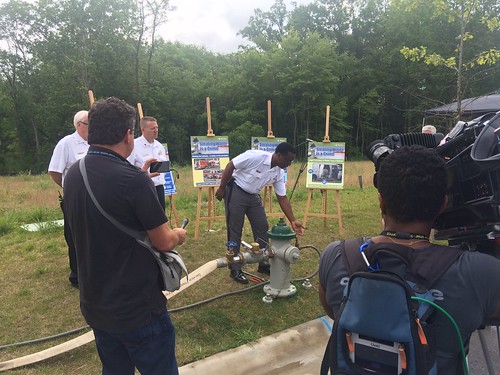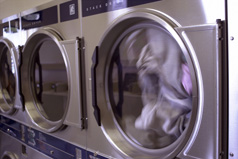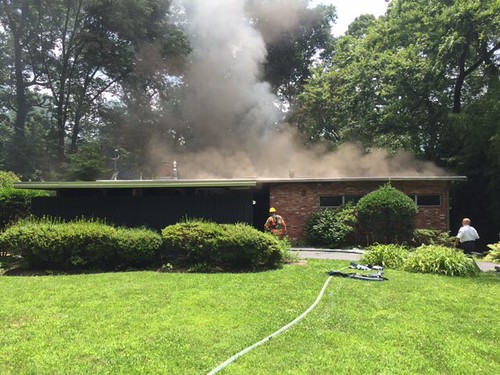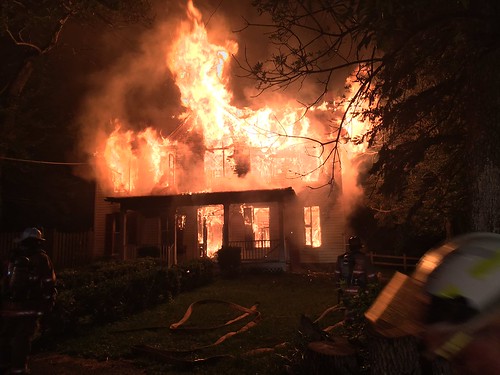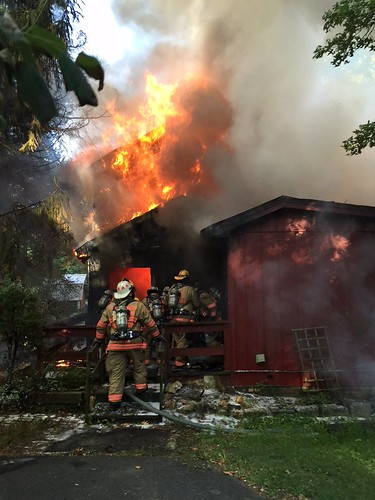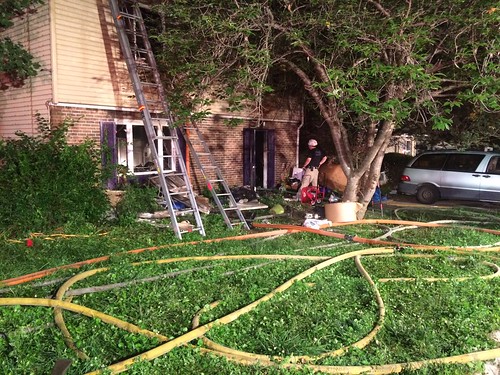Sunday, July 31, 2016
Got it? Get it!
Sign up today. The Alert Montgomery System provides accurate, immediate emergency notifications from Montgomery County to your cell, work or home phone, via text, email or voice message. Receive notifications about emergencies that may affect your home, workplace, child's school or any other locations within Montgomery County, Maryland.
Government and School Closures for county government or public school closures, cancellations or delays due to inclement weather or other emergencies
Weather Advisories for you or your families home, business, school, child care, or more
Infrastructure Issues including Water and Power Outages
Up-To-The-Minute Traffic Issues including accidents, closed roads, alternative routes and more
So please take a moment and SIGN UP FOR ALERT MONTGOMERY today!
Saturday, July 30, 2016
Ready for Anything - Add an emergency kit to your vehicle
When
you’re on the road, your vehicle is an extension of your home. Having an
emergency kit designed for your car and your family can be vital in keeping everyone
safe and entertained on long trips or commutes. In addition to water and
snacks, add items such as a blanket, protein bars, games, bandages and a cell
phone charger The commuting time in the
Washington Metropolitan region is likely to be impacted in the weeks ahead – a
little pre-preparation can make all the difference in being “road ready.”
Thursday, July 28, 2016
“Anchor It!”
Children like to climb on furniture. As you childproof, you may not be aware that unsecured TVs, furniture and appliances are hidden hazards in many rooms. The U.S. Consumer Product Safety Commission (CPSC) recently launched the “Anchor It!” campaign which is a national public education campaign to prevent furniture and TV tip-overs from killing and seriously injuring children.
Tip-overs are one of the top hidden hazards in the home, and CPSC’s new safety campaign is aimed at reducing the number of deaths and injuries from tipping furniture and TVs.
According to CPSC data, unstable and unsecured TVs and large pieces of furniture kill a child every two weeks, on average, in tip-over incidents that are easily preventable. CPSC also reported that 38,000 Americans go to emergency rooms each year with injuries related to tip-overs of top-heavy furniture or televisions placed on furniture, instead of a TV stand. Two-thirds of those injuries involved children younger than 5. Additionally, between 2000 and 2013, 84 percent of the 430 deaths reported to CPSC involved children younger than 10.
Safety Tips:
USE STURDY FURNITURE
Televisions should only be placed on furniture designed to hold a television, such as television stands or media centers.
SECURE YOUR TV
Televisions that are not wall mounted should still be anchored to the wall.
MOUNT FLAT-SCREEN TVS
Mount flat-screen TVs to the wall or to furniture to prevent them from toppling over.
FOLLOW INSTRUCTIONS
Follow the manufacturer’s instructions to secure TVs and furniture properly.
LOW AND STABLE – CRT TV
CRT televisions should only be placed on furniture designed to hold a television, and should be anchored to the wall or the TV stand.
SECURE TOP-HEAVY FURNITURE
Existing furniture can be anchored with inexpensive anti-tip brackets. New furniture, such as dressers, are sold with anti-tip devices. Install them right away.
REMOVE TEMPTING OBJECTS
Remove items that might tempt kids to climb, such as toys and remote controls, from the top of the TV and furniture.
Tip-overs are one of the top hidden hazards in the home, and CPSC’s new safety campaign is aimed at reducing the number of deaths and injuries from tipping furniture and TVs.
According to CPSC data, unstable and unsecured TVs and large pieces of furniture kill a child every two weeks, on average, in tip-over incidents that are easily preventable. CPSC also reported that 38,000 Americans go to emergency rooms each year with injuries related to tip-overs of top-heavy furniture or televisions placed on furniture, instead of a TV stand. Two-thirds of those injuries involved children younger than 5. Additionally, between 2000 and 2013, 84 percent of the 430 deaths reported to CPSC involved children younger than 10.
Safety Tips:
USE STURDY FURNITURE
Televisions should only be placed on furniture designed to hold a television, such as television stands or media centers.
SECURE YOUR TV
Televisions that are not wall mounted should still be anchored to the wall.
MOUNT FLAT-SCREEN TVS
Mount flat-screen TVs to the wall or to furniture to prevent them from toppling over.
FOLLOW INSTRUCTIONS
Follow the manufacturer’s instructions to secure TVs and furniture properly.
LOW AND STABLE – CRT TV
CRT televisions should only be placed on furniture designed to hold a television, and should be anchored to the wall or the TV stand.
SECURE TOP-HEAVY FURNITURE
Existing furniture can be anchored with inexpensive anti-tip brackets. New furniture, such as dressers, are sold with anti-tip devices. Install them right away.
REMOVE TEMPTING OBJECTS
Remove items that might tempt kids to climb, such as toys and remote controls, from the top of the TV and furniture.
For accessible information as it relates to this graphic please click here.
Wednesday, July 27, 2016
Carbon Monoxide Incident In Rockville
Earlier this morning at approximately 3 a.m. in the 1000 block of Gaither Road in Rockville, MCFRS units responded for a reported unknown odor. Units arrived on scene to find elevated levels of Carbon Monoxide (CO) in a four story townhouse as a result of a car running in the garage for several hours,
Elevated readings in two additional homes were found as well. Eight people total were impacted. EMS transported two adults and three children to an area hospital with low levels of CO poisoning for a check up.
MCFRS would like to remind all residents that CO can be a silent killer. Please review the below information for more.
Elevated readings in two additional homes were found as well. Eight people total were impacted. EMS transported two adults and three children to an area hospital with low levels of CO poisoning for a check up.
MCFRS would like to remind all residents that CO can be a silent killer. Please review the below information for more.
Accessible information can be found HERE.
Deck and Balcony Safety
Decks and balconies pose
several hazards — the most serious being that your child could slip through the
railings and fall, or become wedged in the railings and suffocate. Fortunately,
with supervision and a few simple steps, you should be able to prevent these
accidents.
 |
| Example of safe spacing on deck railing |
If the railings on your deck or balcony create any gaps
that are wider than 4 inches, you'll need to make some modifications to stop
your child from squeezing through and to “child proof” the area. There are a
number of options on the market to do this --cover the railings with plastic
garden fencing, shade cloth, a sheet of clear plastic, or rigid sheets of
Plexiglas.
Get in the habit of keeping patio furniture away from
the railings -- this should include potted plants or other climbable objects.
Be aware of furniture light enough for a child to drag to the
balcony's edge. You don't want to give your child a chance to climb up and
go over the edge.
Consider adding latches to any doors or windows that
lead out to your balcony or deck. These latches should be installed well out of
your child's reach.
Ensure children are always SUPERVISED.
Ensure children are always SUPERVISED.
Tuesday, July 26, 2016
Spontaneous Combustion Dangers
Earlier this month, MCFRS made residents aware of the danger of spontaneous combustion. While rare it does happen more often than you think and results in major fire losses each year.
Take a moment to learn more here: Safety Alert: How to Avoid a Disaster in Your Home
Yesterday, to further highlight the dangers of spontaneous combustion fires, Battalion Chief Dee Howard-Richards and Master Firefighter Donnie Boyd appeared on Good Morning America to highlight the dangers of spontaneous combustion. Take the couple of minutes to watch and actually see a spontaneous combustion fire occur.
ABC Breaking News | Latest News Videos
Take a moment to learn more here: Safety Alert: How to Avoid a Disaster in Your Home
Yesterday, to further highlight the dangers of spontaneous combustion fires, Battalion Chief Dee Howard-Richards and Master Firefighter Donnie Boyd appeared on Good Morning America to highlight the dangers of spontaneous combustion. Take the couple of minutes to watch and actually see a spontaneous combustion fire occur.
ABC Breaking News | Latest News Videos
Monday, July 25, 2016
Maintaining Operational Readiness
By: Captain John Emmons
Fire Station 31-A Shift
There is more to a career firefighter's day than responding to emergencies. We also have to maintain our apparatus and equipment to ensure they are ready and will operate when needed the most.
For example, every three months, we complete a detailed maintenance of the ladder on our ladder truck here at Rockville Fire Station 31. This is actually completed on all ladder trucks in the county.
To be done properly, a detailed and lengthy process is required. The first step is to remove the old grease from the ladder. Over time and use, it loses its ability to lubricate and protect the ladder as it is extended and retracted. It is imperative to get off all the old.
The next step is to wash the ladder. A wash brush does not do a very good job so we wash it by hand with a rag, soap and water. After the ladder is dry, it's time to apply a thin coat of fresh, clean grease. The entire process takes several hours and is necessary to keep the ladder operating safely and properly.
Below are some photos from our quarterly aerial cleaning and lubrication we recently competed at station 31.
Fire Station 31-A Shift
There is more to a career firefighter's day than responding to emergencies. We also have to maintain our apparatus and equipment to ensure they are ready and will operate when needed the most.
For example, every three months, we complete a detailed maintenance of the ladder on our ladder truck here at Rockville Fire Station 31. This is actually completed on all ladder trucks in the county.
To be done properly, a detailed and lengthy process is required. The first step is to remove the old grease from the ladder. Over time and use, it loses its ability to lubricate and protect the ladder as it is extended and retracted. It is imperative to get off all the old.
The next step is to wash the ladder. A wash brush does not do a very good job so we wash it by hand with a rag, soap and water. After the ladder is dry, it's time to apply a thin coat of fresh, clean grease. The entire process takes several hours and is necessary to keep the ladder operating safely and properly.
Below are some photos from our quarterly aerial cleaning and lubrication we recently competed at station 31.
Sunday, July 24, 2016
Your Car Can Turn Into An Oven Quickly Today – Please Don’t Leave Your Best Friend Behind!
Another HOT day is in store for us on yet another of the 101 Days of Summer Safety. We are reposting this particular tip in light of this heat wave.
If you are a pet owner and decide to run errands with Spot in your car - do NOT leave Fido in the back seat as you get out and go about your business. A car, on a day like today and even with windows cracked, can turn into an oven very quickly.
Like humans, dogs are at risk of heat stroke during the summer months. It can only take a few minutes for a pet left in a vehicle on a warm day to succumb to heatstroke. Unlike people, our canine friends have very limited ability to cool off by sweating. Dogs have sweat glands on their foot pads only and their main mechanism for cooling down is panting which can be insufficient to lower their body temperature on hot days.
Just a few minutes in a car can be enough for an animal's body temperature to climb to deadly levels that will damage the nervous and cardiovascular systems, often leaving the animal comatose, dehydrated and at risk of permanent impairment or death. Even on a moderate summer day, the sun can turn a car into an oven very quickly. On a mild 70° day the temperature inside a car parked in the shade – even with the window “cracked”- can reach 89° in a few minutes; in direct sunlight it can reach more than 100°.
The law in Maryland: MD Code, Transportation § 21-1004.1
It is illegal for a cat or dog to be in a “standing or parked motor vehicle in a manner that endangers the health or safety of the cat or dog.”
If you are a pet owner and decide to run errands with Spot in your car - do NOT leave Fido in the back seat as you get out and go about your business. A car, on a day like today and even with windows cracked, can turn into an oven very quickly.
Like humans, dogs are at risk of heat stroke during the summer months. It can only take a few minutes for a pet left in a vehicle on a warm day to succumb to heatstroke. Unlike people, our canine friends have very limited ability to cool off by sweating. Dogs have sweat glands on their foot pads only and their main mechanism for cooling down is panting which can be insufficient to lower their body temperature on hot days.
Just a few minutes in a car can be enough for an animal's body temperature to climb to deadly levels that will damage the nervous and cardiovascular systems, often leaving the animal comatose, dehydrated and at risk of permanent impairment or death. Even on a moderate summer day, the sun can turn a car into an oven very quickly. On a mild 70° day the temperature inside a car parked in the shade – even with the window “cracked”- can reach 89° in a few minutes; in direct sunlight it can reach more than 100°.
The law in Maryland: MD Code, Transportation § 21-1004.1
It is illegal for a cat or dog to be in a “standing or parked motor vehicle in a manner that endangers the health or safety of the cat or dog.”
Saturday, July 23, 2016
Heatstroke - How Hot The Inside Of A Car Can Get
An extremely eye opening video from our friends at SafeKids. Please take 53 seconds to watch!
If you ever see a child alone in a car, please call 911. You could save a life!
If you ever see a child alone in a car, please call 911. You could save a life!
Friday, July 22, 2016
Tips on Surviving the Heat Wave
As some of you are no doubt aware, the weather forecast over the next several days calls for sustained, high temperatures and heat index making it especially dangerous for the those at greatest risk including the elderly, the young, those with existing medical conditions and those that work outdoors. Montgomery County government is also offering Tips on Surviving the Heat
 While staying hydrated is essential all year long, it is particularly important when temperatures soar. MCFRS is urging residents to to stay cool, stay hydrated and to check on the welfare of elderly or at-risk neighbors.
While staying hydrated is essential all year long, it is particularly important when temperatures soar. MCFRS is urging residents to to stay cool, stay hydrated and to check on the welfare of elderly or at-risk neighbors.
During hot weather and extreme heat these next several days, and throughout the summer, keep informed by listening to local weather and news channels, use common sense and take a minute to review the tips below.
1. Pre-hydrate, hydrate and re-hydrate.
During hot weather you will need to increase your fluid intake, regardless of your activity level. Drink plenty of fluids in advance, during and after activities and don’t wait until you're thirsty to hydrate. Warning: If your doctor generally limits the amount of fluids you drink or has prescribed water pills, ask how much you should drink when the weather is hot.
2. Dress for the heat.
Wear lightweight, light-colored clothing. Light colors will reflect some of the sun’s energy.Limit your direct exposure to the sun and wear a hat for extra protection.
3. Monitor those at high risk.
Extreme heat can be hazardous to your health and although anyone can suffer from heat-related illness, some people are at greater risk than others. Those most at risk for heat-related illnesses include children, older adults, those that work or exercise outside and those with pre-existing medical conditions. Elderly, low income or individuals with disabilities in Montgomery County in need of a fan can call 240-777-3000 for information on free fans.
4. Children and cars - use common sense.
Never leave infants, children, pets or the elderly in a parked car where temperatures can become life-threatening in minutes, even with the windows rolled down. Additionally, hot interior surfaces of a car can burn a child’s skin. Before you put your child in a car that has been parked in a warm/sunny spot, check the temperature of the car seat or upholstery first.
5. Avoid strenuous activity.
When possible, strenuous activities should be reduced, eliminated or rescheduled to the coolest part of the day. Take regular breaks when exercising or engaged in physical activity on warm days. If you recognize that you, or someone else, is showing signs of a heat-related illness, stop the activity immediately, find a cool place to rest, hydrate and seek medical attention if necessary.
Remember, heat stroke is a MEDICAL EMERGENCY that can be fatal if not treated promptly. The American Red Cross advises that warning signs can vary among individuals but common signs of heat exhaustion or heat stroke may include:
Heat Exhaustion:
- Heavy sweating
- Muscle cramps
- Pulse rate: fast and weak
- Breathing: fast and shallow
- Nausea or vomiting
- Fatigue
- Weakness
- Headache and/or dizziness
Heat Stroke:
- An extremely high body temperature (above 103 degrees)
- The absence of sweating
- Rapid pulse
- Difficulty breathing
- Throbbing headache
- Strange behavior and/or hallucinations
- Confusion, agitation and disorientation
- Unconscious
6. Be a good neighbor.
Isolated, elderly adults are at a much higher risk of health-related issues. Be a good neighbor and take a minute to check in with your neighbors.
7. Remember your pets.
Hot weather can affect the well-being of pets making them susceptible to overheating which can lead to very dangerous heat stroke. Always provide a source of water and a cool, ventilated place for your pet. Leaving your pet inside a parked car, even for a few minutes, can be fatal. The inside of a car can reach 120 degrees in a matter of minutes.
8. Stay indoors, if possible.
Stay indoors and, if possible, in an air-conditioned place. If your home does not have air conditioning, consider going to the shopping mall, community center or public library. Even a few hours spent in air conditioning can help your body stay cooler when you return to the heat.
 While staying hydrated is essential all year long, it is particularly important when temperatures soar. MCFRS is urging residents to to stay cool, stay hydrated and to check on the welfare of elderly or at-risk neighbors.
While staying hydrated is essential all year long, it is particularly important when temperatures soar. MCFRS is urging residents to to stay cool, stay hydrated and to check on the welfare of elderly or at-risk neighbors. During hot weather and extreme heat these next several days, and throughout the summer, keep informed by listening to local weather and news channels, use common sense and take a minute to review the tips below.
1. Pre-hydrate, hydrate and re-hydrate.
During hot weather you will need to increase your fluid intake, regardless of your activity level. Drink plenty of fluids in advance, during and after activities and don’t wait until you're thirsty to hydrate. Warning: If your doctor generally limits the amount of fluids you drink or has prescribed water pills, ask how much you should drink when the weather is hot.
2. Dress for the heat.
Wear lightweight, light-colored clothing. Light colors will reflect some of the sun’s energy.Limit your direct exposure to the sun and wear a hat for extra protection.
3. Monitor those at high risk.
Extreme heat can be hazardous to your health and although anyone can suffer from heat-related illness, some people are at greater risk than others. Those most at risk for heat-related illnesses include children, older adults, those that work or exercise outside and those with pre-existing medical conditions. Elderly, low income or individuals with disabilities in Montgomery County in need of a fan can call 240-777-3000 for information on free fans.
4. Children and cars - use common sense.
Never leave infants, children, pets or the elderly in a parked car where temperatures can become life-threatening in minutes, even with the windows rolled down. Additionally, hot interior surfaces of a car can burn a child’s skin. Before you put your child in a car that has been parked in a warm/sunny spot, check the temperature of the car seat or upholstery first.
5. Avoid strenuous activity.
When possible, strenuous activities should be reduced, eliminated or rescheduled to the coolest part of the day. Take regular breaks when exercising or engaged in physical activity on warm days. If you recognize that you, or someone else, is showing signs of a heat-related illness, stop the activity immediately, find a cool place to rest, hydrate and seek medical attention if necessary.
Remember, heat stroke is a MEDICAL EMERGENCY that can be fatal if not treated promptly. The American Red Cross advises that warning signs can vary among individuals but common signs of heat exhaustion or heat stroke may include:
Heat Exhaustion:
- Heavy sweating
- Muscle cramps
- Pulse rate: fast and weak
- Breathing: fast and shallow
- Nausea or vomiting
- Fatigue
- Weakness
- Headache and/or dizziness
Heat Stroke:
- An extremely high body temperature (above 103 degrees)
- The absence of sweating
- Rapid pulse
- Difficulty breathing
- Throbbing headache
- Strange behavior and/or hallucinations
- Confusion, agitation and disorientation
- Unconscious
6. Be a good neighbor.
Isolated, elderly adults are at a much higher risk of health-related issues. Be a good neighbor and take a minute to check in with your neighbors.
7. Remember your pets.
Hot weather can affect the well-being of pets making them susceptible to overheating which can lead to very dangerous heat stroke. Always provide a source of water and a cool, ventilated place for your pet. Leaving your pet inside a parked car, even for a few minutes, can be fatal. The inside of a car can reach 120 degrees in a matter of minutes.
8. Stay indoors, if possible.
Stay indoors and, if possible, in an air-conditioned place. If your home does not have air conditioning, consider going to the shopping mall, community center or public library. Even a few hours spent in air conditioning can help your body stay cooler when you return to the heat.
Thursday, July 21, 2016
Candle Safety
Yet another important 101 Days of Summer Safety topic - Candles.
Candles may look festive and smell pretty but understand that unattended candles account for thousands of fires annually. The National Fire Protection Association (NFPA) reports that, on average, 25 home candle fires are reported across the United States each day. Back in May, a candle caused a house fire in Bethesda.
In addition, the NFPA reports that from 2009-2013, U.S. fire departments responded to an estimated 9,300 home structure fires that were started by candles. These fires caused 86 deaths, 827 injuries and $374 million in direct property damage.
MCFRS asks that all residents consider battery-operated, flameless candles instead. Many look and smell like real candles - you really can’t tell the difference!
If you still wish to use open flame candles, MCFRS would like to remind all residents to check your smoke alarms regularly and please follow these safety tips while using candles in the home:
For more tips go here: Candle Safety
Candles may look festive and smell pretty but understand that unattended candles account for thousands of fires annually. The National Fire Protection Association (NFPA) reports that, on average, 25 home candle fires are reported across the United States each day. Back in May, a candle caused a house fire in Bethesda.
In addition, the NFPA reports that from 2009-2013, U.S. fire departments responded to an estimated 9,300 home structure fires that were started by candles. These fires caused 86 deaths, 827 injuries and $374 million in direct property damage.
MCFRS asks that all residents consider battery-operated, flameless candles instead. Many look and smell like real candles - you really can’t tell the difference!
If you still wish to use open flame candles, MCFRS would like to remind all residents to check your smoke alarms regularly and please follow these safety tips while using candles in the home:
- Extinguish all candles when leaving the room or going to sleep.
- If power is out please use flashlights for emergency lighting. Never use candles.
- Keep candles away from items that can catch fire (e.g., clothing, books, paper, curtains, Christmas trees, flammable decorations, etc.).
- Use candle holders that are sturdy, won't tip over easily, are made from a material that can't burn and are large enough to collect dripping wax.
- Don't place lit candles in windows. Blinds and curtains can easily ignite.
- Place candle holders on a sturdy, uncluttered surface and do not use candles in places where they could be knocked over by children or pets.
- Keep candles and all open flames away from flammable liquids.
- Keep candle wicks trimmed to one-quarter inch and extinguish candles when they get to within two inches of the holder or decorative material. Votive and containers should be extinguished before the last half-inch of wax starts to melt.
- Avoid candles with decorative items embedded in them.
For more tips go here: Candle Safety
Wednesday, July 20, 2016
Quiz Results
Yesterday, we decided to give a little Twitter quiz to see how much our loyal followers knew about the cause of home structure fires and injuries.
Well over one hundred of you took the challenge and we are happy to report that 52% of you got the answer correct. Cooking related fires are the leading cause of home structure fires and home fire injuries!
Heating equipment comes in at number two. Smoking is the leading cause of civilian home fire deaths.
Please see below for the question and the answers. Thanks to all of you who participated!
Well over one hundred of you took the challenge and we are happy to report that 52% of you got the answer correct. Cooking related fires are the leading cause of home structure fires and home fire injuries!
Heating equipment comes in at number two. Smoking is the leading cause of civilian home fire deaths.
Please see below for the question and the answers. Thanks to all of you who participated!
#mcfrsSOS Quiz-Which fire cause below is the leading cause of home structure fires & home fire injuries? #MoCoSafety— MontgomeryCo(MD)Fire (@mcfrs) July 19, 2016
Tuesday, July 19, 2016
Community Connections
By: Lieutenant Robert Furst
Fire Station 19, in Montgomery Hills, is located directly next Snyder's Super Foods. The parking lots touch each other and the apparatus bay is in plain view of the customers that are patronizing the store. The constant traffic moving in and out of Snyder's affords the crew of Company 19 with many opportunities to interact with their customers - who are also our customers.
Frequently, we have the pleasure of meeting young children and their parents or guardians which proves to be a twofold win. First, we have a chance to show the children the fire apparatus (kids love fire trucks) and the station. And we take the opportunity to educate the adults about our mission and fire safety practices.
We frequently converse with the same people, and sometimes we are presented with showings of appreciation of our efforts for which we are grateful.
Fire Station 19, in Montgomery Hills, is located directly next Snyder's Super Foods. The parking lots touch each other and the apparatus bay is in plain view of the customers that are patronizing the store. The constant traffic moving in and out of Snyder's affords the crew of Company 19 with many opportunities to interact with their customers - who are also our customers.
Frequently, we have the pleasure of meeting young children and their parents or guardians which proves to be a twofold win. First, we have a chance to show the children the fire apparatus (kids love fire trucks) and the station. And we take the opportunity to educate the adults about our mission and fire safety practices.
We frequently converse with the same people, and sometimes we are presented with showings of appreciation of our efforts for which we are grateful.
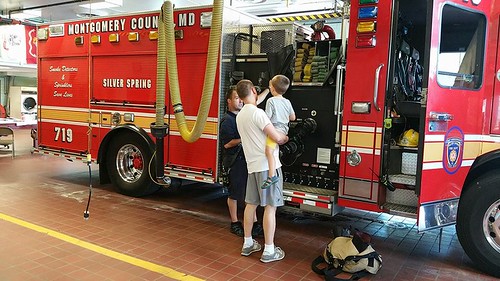 |
| Lt. Dustin Poist showing off Engine 19 |
Going Out Of Town? Do Not Take A Vacation From Fire Safety!
Getting ready to go out of town? The summer months are not the time to take a vacation from fire safety. Be sure to check your home before leaving to minimize the risk of fire while you are away and review these important safety tips:
Your Home
If You Are Staying In A Hotel/Motel
When you are traveling away from home and staying in a hotel or motel, it is important to know what actions to take in the event of a fire. While hotel fires account for only a small number of fire fatalities, they present a unique fire risk. Fire can spread quickly in hotels and guests are typically in unfamiliar surroundings. While sprinklers, smoke alarms and fire walls are required in many parts of the world, do not assume that all hotels will have the same safety features you may be accustomed to. The more you know in advance about dealing with a fire emergency, the better your chances for survival:
Your Home
- All stoves and electrical appliances should be turned off or disconnected.
- Unplug all television sets, computers and radios. Lightning storms or sudden electrical surges can damage or even cause a fire in these types of equipment.
- When you return, check to make sure all smoke alarms are working.
- Tell a trusted neighbor your departure and return dates. Supply an itinerary with phone numbers where you can be reached in the event of an emergency.
If You Are Staying In A Hotel/Motel
When you are traveling away from home and staying in a hotel or motel, it is important to know what actions to take in the event of a fire. While hotel fires account for only a small number of fire fatalities, they present a unique fire risk. Fire can spread quickly in hotels and guests are typically in unfamiliar surroundings. While sprinklers, smoke alarms and fire walls are required in many parts of the world, do not assume that all hotels will have the same safety features you may be accustomed to. The more you know in advance about dealing with a fire emergency, the better your chances for survival:
- Select a hotel/motel that, at a minimum, has smoke alarms installed. It is recommended to select lodging that also has a fire sprinkler system installed. If you must stay in a hotel/motel without alarms or sprinklers, or have mobility limitations, request a room on the first or second floor.
- When you arrive, review the fire safety information provided. It is typically posted near or on the back of the entry door. Just like in your home, you need to plan your escape ahead of time. Locate the two exits nearest your room. Walk the potential escape routes, counting the number of doors between your room and the exit. Make sure that the fire exit doors work and are unlocked. In a real fire, the hallway may become dark with smoke making it hard to see.
- Put your room key, flashlight, cell phone, eyeglasses and shoes, near the bed. You don't want to waste any time looking for things during a fire and keeping everything together can make your escape easier.
- Learn what number to call in the event of an emergency - not all locations use 9-1-1.
Sunday, July 17, 2016
Propane Grill Fire Causes One Minor Injury
On Saturday, July 16 at approximately 4 p.m., MCFRS units responded for a reported fire on a deck in the 2300 block of North Gate Terrace in the Layhill area of the county. First arriving firefighters found a propane grill on fire on the deck to the rear of the home.
All occupants were safely out of the house though firefighters reported one occupant with minor burns that required medical evaluation. Firefighters let the 'venting' propane tank burn and held it in check, before extinguishment containing the fire to the deck with no extension to the home.
The occupant of the home stated that a new propane cylinder had been installed on the grill earlier in the day. After lighting the grill, the occupant heard a slight hissing noise in the area of the propane cylinder and was checking the fitting of the hose to the cylinder when a flash fire occurred.
Approximately 45 firefighters were on the scene. One adult female occupant of the home was transported to an area hospital for a check-up of minor burns. Damages were estimated to be $500 total to the grill and deck.
A contributing factor in the fire not spreading to the home was the fact the occupant placed the propane grill away from house. MCFRS recommends that residents position the grill well away from siding, deck railings and out from under eaves and overhanging branches. Learn more safe grilling tips here: Outdoor Grilling Safety
All occupants were safely out of the house though firefighters reported one occupant with minor burns that required medical evaluation. Firefighters let the 'venting' propane tank burn and held it in check, before extinguishment containing the fire to the deck with no extension to the home.
The occupant of the home stated that a new propane cylinder had been installed on the grill earlier in the day. After lighting the grill, the occupant heard a slight hissing noise in the area of the propane cylinder and was checking the fitting of the hose to the cylinder when a flash fire occurred.
Approximately 45 firefighters were on the scene. One adult female occupant of the home was transported to an area hospital for a check-up of minor burns. Damages were estimated to be $500 total to the grill and deck.
A contributing factor in the fire not spreading to the home was the fact the occupant placed the propane grill away from house. MCFRS recommends that residents position the grill well away from siding, deck railings and out from under eaves and overhanging branches. Learn more safe grilling tips here: Outdoor Grilling Safety
It’s HOT Out There! Important Reminder For Athletes Of All Ages
Another hot one with more on the way. Many athletes young, and young at heart, still want to work out or participate in a variety of outdoor activities and sports. Please make sure you do so wisely and be informed.
Below are some important tips from our friends from Centers for Disease Control and Prevention to take into consideration before you train, workout, or compete.
Below are some important tips from our friends from Centers for Disease Control and Prevention to take into consideration before you train, workout, or compete.
- Pace activity. Start activities slowly and pick up the pace gradually.
- Schedule workouts or practices earlier or later in the day to avoid midday heat.
- Drink from two to four cups of water every hour while exercising. Muscle cramping may be an early sign of heat sickness.
- Drink plenty of water and don’t wait until you’re thirsty to drink.
- Avoid liquids containing large amounts of sugar.
- Exercise with a partner or teammate.
- STOP all activity and get to a cool environment if you feel faint or weak.
Saturday, July 16, 2016
Don't Overload Your Home!
MCFRS has responded to several fires recently that were caused by some sort of electrical malfunction.
In many older homes, the capacity of the wiring system has not kept pace with today's modern appliances. Overloaded electrical systems create fire hazards. Our partners in safety at the Electrical Safety Foundation International have a few tips that we would like to share as part of our 101 Days of Summer Safety. Please take a moment to view and take preventive action if need be.
In many older homes, the capacity of the wiring system has not kept pace with today's modern appliances. Overloaded electrical systems create fire hazards. Our partners in safety at the Electrical Safety Foundation International have a few tips that we would like to share as part of our 101 Days of Summer Safety. Please take a moment to view and take preventive action if need be.
Accessible version here on ESFI site
Friday, July 15, 2016
Not Your Average Dog!
Today is National Pet Fire Safety Day and it is part of our 101 Days of Summer Safety.
To help bring awareness, Lt. Josh Kurland and top dog “Mason” who is a member of Montgomery County’s Urban Search and Rescue (USAR) K9 team will be sharing safety tips this evening between 6 – 8 p.m. at Gaithersburg’s Bark! store located in the Kentlands. Come snap a picture with Mason and learn all about the training and tests USAR dogs must pass as well as how to keep your dogs and family safe year-round.
What you might not know – when Mason is “off duty” he is a very important member of the Kurland family and you can frequently find Lt. Kurland’s son helping Mason (right) refine his skills.
USAR Task Forces are supported by highly trained canines and canine handlers. All of FEMA’s USAR Task Forces have canine/handler teams, all of which are trained in urban search and rescue strategies and tactics. Each canine/handler team must pass a rigorous national certification in urban search and rescue. Canine/handler teams must be re-certified every three years in order to participate in search and rescue operations. The canine must be at least 18 months old to attempt the test. Most canines test after they are two years old—well-trained and physically and emotionally mature enough to do this job.
For the handler, certification includes tests regarding search strategies and tactics, mapping, search and victim markings, briefing and debriefing skills, in addition to canine handling skills. For the disaster search canine, certification includes proper command control, agility skills, a focused bark alert to indicate a live find, and a willingness to persist to search for live victims in spite of possible extreme temperatures and animal, food and noise distractions. The canine must also be confident enough to search independently and must be able to negotiate slippery surfaces, balance wobbly objects underneath his feet and go through dark tunnels.
The team tests on two large rubble piles for an unknown number of victims, implementing all of their knowledge, skills and abilities acquired from years of training. Teams that pass are some of the most highly trained canine resources in the country and MCFRS is fortunate to have the talents of Mason and Lt. Kurland!
To help bring awareness, Lt. Josh Kurland and top dog “Mason” who is a member of Montgomery County’s Urban Search and Rescue (USAR) K9 team will be sharing safety tips this evening between 6 – 8 p.m. at Gaithersburg’s Bark! store located in the Kentlands. Come snap a picture with Mason and learn all about the training and tests USAR dogs must pass as well as how to keep your dogs and family safe year-round.
What you might not know – when Mason is “off duty” he is a very important member of the Kurland family and you can frequently find Lt. Kurland’s son helping Mason (right) refine his skills.
USAR Task Forces are supported by highly trained canines and canine handlers. All of FEMA’s USAR Task Forces have canine/handler teams, all of which are trained in urban search and rescue strategies and tactics. Each canine/handler team must pass a rigorous national certification in urban search and rescue. Canine/handler teams must be re-certified every three years in order to participate in search and rescue operations. The canine must be at least 18 months old to attempt the test. Most canines test after they are two years old—well-trained and physically and emotionally mature enough to do this job.
For the handler, certification includes tests regarding search strategies and tactics, mapping, search and victim markings, briefing and debriefing skills, in addition to canine handling skills. For the disaster search canine, certification includes proper command control, agility skills, a focused bark alert to indicate a live find, and a willingness to persist to search for live victims in spite of possible extreme temperatures and animal, food and noise distractions. The canine must also be confident enough to search independently and must be able to negotiate slippery surfaces, balance wobbly objects underneath his feet and go through dark tunnels.
The team tests on two large rubble piles for an unknown number of victims, implementing all of their knowledge, skills and abilities acquired from years of training. Teams that pass are some of the most highly trained canine resources in the country and MCFRS is fortunate to have the talents of Mason and Lt. Kurland!
Glen Echo House Fire Displaces Family Of Five
On Thursday, July 14 at approximately 4:30 p.m. MCFRS units were dispatched for a report of a house fire in the 6700 block of Rannoch Road in the Glen Echo area of the county. First arriving units reported smoke showing from a two-story, single family home.
Upon further investigation, firefighters reported the fire was in the basement with some extension to the first floor. Additional firefighting resources were requested and dispatched. The fire was quickly brought under control and extinguished.
A family of five was home at the time and safely evacuated. They reported the home lost power and shortly thereafter smelled a slight burning odor. A short time later, smoke became heavy in the basement and they called 911.
Approximately 75 firefighters were on the scene. Crews were rotated frequently during operations and overhaul due to the high temps and heat index which was well over 100°. MCFRS was assisted by mutual aid crews from Fairfax County Fire and Rescue, National Institutes of Health Fire Department, and the Naval Surface Warfare Center Fire Department. One firefighter was transported with a heat related illness to an area hospital for a checkup.
Investigation determined the cause of the fire to be electrical and accidental in nature. Damages were estimated at $150,000.00 to the contents and $50,000.00 to the structure. Two adults, three children and two dogs have been displaced as a result of the fire. Firefighters will be going back out to the community later today and going door to door offering to check smoke alarms and provide safety tips.
A family of five was home at the time and safely evacuated. They reported the home lost power and shortly thereafter smelled a slight burning odor. A short time later, smoke became heavy in the basement and they called 911.
Approximately 75 firefighters were on the scene. Crews were rotated frequently during operations and overhaul due to the high temps and heat index which was well over 100°. MCFRS was assisted by mutual aid crews from Fairfax County Fire and Rescue, National Institutes of Health Fire Department, and the Naval Surface Warfare Center Fire Department. One firefighter was transported with a heat related illness to an area hospital for a checkup.
Investigation determined the cause of the fire to be electrical and accidental in nature. Damages were estimated at $150,000.00 to the contents and $50,000.00 to the structure. Two adults, three children and two dogs have been displaced as a result of the fire. Firefighters will be going back out to the community later today and going door to door offering to check smoke alarms and provide safety tips.
Thursday, July 14, 2016
Stealing Water From A Fire Hydrant Is A Crime
 Did you know that stealing water from a fire hydrant is a crime? Well, it is.
Did you know that stealing water from a fire hydrant is a crime? Well, it is.Of particular concern to fire departments is the potential for collateral damage that can occur to the fire hydrant as a result of this illegal act. Damage that could negatively impact our firefighters ability to get enough water to fight a fire.
Yesterday, MCFRS Fire Chief Scott Goldstein along with the Washington Suburban Sanitary Commission (WSSC) Police Chief Harvey Baker and Deputy Fire Chief Jim McClelland from the Prince George’s County Fire/EMS Department joined together to raise awareness about water theft and highlight the potential public safety consequences as a result.
Below, please find a video from the press event originally broadcast live on our Periscope and Facebook pages. As well, some photos from the event.
You can also learn more from WSSC on how you can help: WSSC Kicks Off Water Theft Prevention Program
Wednesday, July 13, 2016
Adopt A Hydrant
Help us to help YOU!
If you have a fire hydrant on or near your property please do not plant flowers, shrubs or anything that will block the view from the fire department. Consider planting ground cover instead.
Make sure to keep weeds or vegetation from blocking access or sight. Trim vegetation to maintain a minimum of a 3 foot clearance around the fire hydrant.
Firefighters look for fire hydrants in an emergency situation and every second counts.
 |
| Example of a hidden fire hydrant |
If you have a fire hydrant on or near your property please do not plant flowers, shrubs or anything that will block the view from the fire department. Consider planting ground cover instead.
Make sure to keep weeds or vegetation from blocking access or sight. Trim vegetation to maintain a minimum of a 3 foot clearance around the fire hydrant.
Firefighters look for fire hydrants in an emergency situation and every second counts.
Tuesday, July 12, 2016
Clothes Dryer Fire Safety Tips
Over the last several months, MCFRS has responded to a number of clothes dryer related fires. A lack of maintenance, buildup of lint, placing inappropriate items in the dryer and inadequate venting are frequently cited as contributing factors. Please take a moment to review some very important tips below as part of our 101 Days of Summer Safety.
Did You Know?
Did You Know?
- The U.S. Consumer Product Safety Commission (CPSC) estimates that 15,500 clothes dryer fires occur annually, causing an average of 10 deaths, 310 injuries and more than $84.4 million in property damage.
- Eighty-percent of American homes have clothes dryers.
- A full load of wet clothes placed in a dryer contains about one half gallon of water. As the clothes dry, lint forms and builds up, reducing airflow in the dryer's vent, potentially causing the dryer to work improperly or overheat.
Clothes Dryer DOs:
- DO clean the lint screen/filter before or after drying EACH load of clothes.
- DO clean the dryer vent and exhaust duct periodically.
- DO have a certified service technician clean and inspect the dryer and venting system regularly.
- DO replace plastic or vinyl exhaust hoses with rigid or flexible metal venting, which provides maximum airflow.
- DO keep the area around the dryer clean and free from clutter.
- DO always use the appropriate electrical outlet for dryers and all major appliances.
Clothes Dryer DON'Ts:
- DON'T place clothing or fabric stained with a flammable substance, such as alcohol, cooking oils, gasoline, spot removers or motor oil, in the dryer. Flammable substances give off vapors that could ignite or explode. Instead, dry the materials outdoors.
- DON'T leave a dryer operating if you are not home.
- DON'T forget to read the manufacturer warnings in the user manual and on the inside of the dryer door DON'T dry any item containing foam, rubber or plastic, such as bathroom and non-slip rugs and athletic shoes.
- DON'T dry any item that contains glass fiber materials, such as a blouse or sweater with glass buttons or decorations.
- DON'T overload the dryer with wet clothes.
Monday, July 11, 2016
Montgomery County’s 911 System Has Been Restored
Montgomery County’s 911 system continues to function properly after being down for approximately two hours last night and into this morning.
During an emergency, the public should contact 911 for an emergency response from police, fire and emergency medical services.
If A CALLER HEARS a busy signal or IS unable to get through on 911, the CALLER should contact 311 OR THE CLOSEST local fire station or police DISTRICT station.
Fire Stations:
http://www.montgomerycountymd.gov/mcfrs/connect/phone.html
Police Stations
Rockville Station 240-773-6070
Bethesda Station 240-773-6700
Silver Spring 240-773-6800
Wheaton 240-773-5500
Germantown 240-773-6200
Gaithersburg 240-773-5700
During an emergency, the public should contact 911 for an emergency response from police, fire and emergency medical services.
If A CALLER HEARS a busy signal or IS unable to get through on 911, the CALLER should contact 311 OR THE CLOSEST local fire station or police DISTRICT station.
http://www.montgomerycountymd.gov/mcfrs/connect/phone.html
Police Stations
Rockville Station 240-773-6070
Bethesda Station 240-773-6700
Silver Spring 240-773-6800
Wheaton 240-773-5500
Germantown 240-773-6200
Gaithersburg 240-773-5700
Sunday, July 10, 2016
Glen Echo House Fire Displaces Family Of Four
On Friday, July 8 at approximately 12:36 p.m. MCFRS units responded to the 5400 block of Mohican Road in the Glen Echo area of the county for a report of flames coming from a house. Units arrived on the scene of a one story, single family home with heavy smoke and fire evident from the rear of the home. An RID and Task Force assignment were immediately dispatched.
The crew from PE711 initiated an attack on the bulk of the fire which was throughout the first floor of the home. Limited access and steep terrain in the rear, as well as building construction that included many additions and void spaces made it challenging for firefighters.
Other crews performed a search and rescue of the home to ensure none of the occupants was still inside. It was quickly learned that the family of four was out of town on vacation. A neighbor had called 911 after noticing the smoke and fire.
Firefighters did manage to find and rescue a large turtle that is a family pet.
Over 75 firefighters responded to the scene. There were no civilian injuries while one firefighter did suffer from a heat related illness and treated.
Cause of the fire remains under investigation. Damages were estimated to be $650,000.00 to the structure and $150,000.00 to the contents. A family of four has been displaced as a result of the fire.
Other crews performed a search and rescue of the home to ensure none of the occupants was still inside. It was quickly learned that the family of four was out of town on vacation. A neighbor had called 911 after noticing the smoke and fire.
Firefighters did manage to find and rescue a large turtle that is a family pet.
Over 75 firefighters responded to the scene. There were no civilian injuries while one firefighter did suffer from a heat related illness and treated.
Cause of the fire remains under investigation. Damages were estimated to be $650,000.00 to the structure and $150,000.00 to the contents. A family of four has been displaced as a result of the fire.
Portable Generators And Carbon Monoxide Poisoning
 Portable generators can be a tremendous resource to have when power to your home is out. But they can also be dangerous if not used properly.
Portable generators can be a tremendous resource to have when power to your home is out. But they can also be dangerous if not used properly.This past week, four workers were operating a portable generator inside a house in an unventilated area and had to be rushed to area hospitals suffering from Carbon Monoxide (CO) poisoning.
As we all know, Summer brings severe weather that at times will cause power outages. More and more residents are relying on portable generators to provide power to their homes during these times. Please take a moment to review the below safety tips. If you do not have a portable generator but know someone who does, please make sure you share this important information!
1. Make sure your home has a carbon monoxide alarm. As with smoke alarms, install a carbon monoxide alarm on every level of your home, especially near sleeping areas, and keep them at least 15 feet away from fuel-burning appliances.
2. Carbon monoxide alarms are not substitutes for smoke alarms, and vice versa. Combination smoke and carbon monoxide alarms are available.
3. Never use a grill, generator or camping stove inside your home, garage or near a window. The generator should be at least 20 feet clear of any garage, window or vent.
4. Follow the instructions that come with your generator. Locate the unit outdoors and far from doors, windows, and vents that could allow CO to come indoors.
5. If using gasoline-powered devices, store gasoline in a locked location where children cannot access it. Keep only small quantities in an approved container that has child safety features.
6. Keep gasoline away from any source of heat, spark or flame. Even common household appliances such as water heaters and clothes dryers can start a fire. Be sure to store your gasoline away from anything that could ignite it.
7. Before refueling the generator, turn it off and let it cool down. Gasoline spilled on hot engine parts could ignite.
Saturday, July 9, 2016
No Hot Cars - Look Before You Lock!
Another hot day today in our 101 Days of Summer Safety!
When temperatures rise, so does the risk of tragedy – children and pets accidentally left in hot cars. Do not leave children or pets inside a hot car even for one minute! As you can see in the graphic below, when outside temperatures are in the low 80s, the temperature inside a vehicle can reach deadly levels in only minutes even with a window rolled down two inches.
When temperatures rise, so does the risk of tragedy – children and pets accidentally left in hot cars. Do not leave children or pets inside a hot car even for one minute! As you can see in the graphic below, when outside temperatures are in the low 80s, the temperature inside a vehicle can reach deadly levels in only minutes even with a window rolled down two inches.
Friday, July 8, 2016
Curiosity Shouldn't Kill
Poisonings can happen to anyone. Remember, the Poison Control Hotline is not just for emergencies – you can call with questions too. All calls are free and confidential.
Save the Poison Help number, 1-800-222-1222, in your phone and post it in your home for babysitters and visitors.
And remember, in an emergency, always call 911.
Save the Poison Help number, 1-800-222-1222, in your phone and post it in your home for babysitters and visitors.
And remember, in an emergency, always call 911.
Thursday, July 7, 2016
Safety Alert: How to Avoid a Disaster in Your Home
 Spontaneous combustion happens more often than you think and results in major fire losses each year. Spontaneous combustion of oily rags occurs when rag or cloth is slowly heated to its ignition point through oxidation. A substance will begin to release heat as it oxidizes. If this heat has no way to escape, like in a pile of rags, the temperature will raise to a level high enough to ignite the oil and ignite the rag or cloth causing major fire damage and loss. One of the most common scenarios occurs when floors, fences or decking are being refinished and stain-soaked and oily rags are left in a pile on the floor, deck or garage.
Spontaneous combustion happens more often than you think and results in major fire losses each year. Spontaneous combustion of oily rags occurs when rag or cloth is slowly heated to its ignition point through oxidation. A substance will begin to release heat as it oxidizes. If this heat has no way to escape, like in a pile of rags, the temperature will raise to a level high enough to ignite the oil and ignite the rag or cloth causing major fire damage and loss. One of the most common scenarios occurs when floors, fences or decking are being refinished and stain-soaked and oily rags are left in a pile on the floor, deck or garage.Common Products:
• Linseed oil and other drying oils
• Wood Stain
• Alkyd Enamel Resins
• Motor Fuels
• Oil-based products such as primer, sealer, paint, White-Pigmented Shellac, paint thinner, turpentine, mineral spirits and denatured alcohol.
Prevention of spontaneous combustion fires begins with good housekeeping. A clean work area can prevent a fire from spreading and getting bigger by not allowing the fire fuel to burn. Also understanding the potential for self-heating of rags soiled with oils such as linseed oil and turpentine is a key step in eliminating these preventable fires. Be sure to educate contractors that may be working in your home and “DIY” friends and family members. Always read and follow the safety precautions listed on the container of any solvent-based material.
Tips for Storing and Disposing of oil-soaked rags:
1. DO NOT ball up, pile, stack or fold any wiping cloth, rag, towel, drop cloth, steel wool or piece of work clothing that becomes moistened or wet due to contact with a solvent-based material.
2. DO NOT toss used rags into a trash can or plastic bucket or even consider putting them in the dryer!
3. DO store used rags in a metal container with water in it and a lid firmly on top away from the house.
4. SAFELY STORE any garage/workshop supplies. Paints and solvents should not be kept near heat generating equipment such as cars, furnaces or water heaters.
Please take a moment to view this informative report on the subject from NBC4.
Know Your First Due
By: Captain Scott Buchholz
Fire Station 12 A-Shift
As firefighters and company officers, knowing where you are going and understanding the intricacies of the first due (primary) response area are of high importance.
Fire Station 12 A-shift (and most other companies) learn their first due area by getting out and physically exploring the area. An important part of knowing where you are going is learning streets/roads in the first due and to help with that a map drill is conducted at the start of every shift (as shown in the picture below).
Fire Station 12 A-Shift
As firefighters and company officers, knowing where you are going and understanding the intricacies of the first due (primary) response area are of high importance.
Fire Station 12 A-shift (and most other companies) learn their first due area by getting out and physically exploring the area. An important part of knowing where you are going is learning streets/roads in the first due and to help with that a map drill is conducted at the start of every shift (as shown in the picture below).
Wednesday, July 6, 2016
MCFRS Significant Incident Map - June 2016
Click on the icons and learn more about significant incidents that occurred in June. You may even find videos and photos embedded within the icon. You will also find links to more information in many as well.
This is another layer in the significant incident map since March. Once you go into the map, you can click the March, April and/or May box which will then layer those incidents in with the June map below.
This is another layer in the significant incident map since March. Once you go into the map, you can click the March, April and/or May box which will then layer those incidents in with the June map below.
Heat Exhaustion and Heatstroke
Today, tomorrow and Friday are going to be HOT! With that in mind MCFRS wants to share the below information that might be helpful. Be safe out there the rest of the week!
Extreme heat brings with it the possibility of heat-induced illnesses. During the hot, humid summer weather, the body's internal temperature can rise and can result in heat exhaustion and heatstroke. If not treated quickly, heat exhaustion can progress into heat stroke, which requires immediate medical care and can be fatal.
Signs and Symptoms:
Heat Exhaustion
If the person has a temperature of 105 degrees Fahrenheit or more or shows signs and symptoms of heatstroke, seek emergency medical care immediately. In cases of heat exhaustion and while waiting for help:
Heat Exhaustion is the result of excessive heat and dehydration. Heat Stroke is a medical emergency!
 |
| from CDC.gov |
Signs and Symptoms:
Heat Exhaustion
- Severe thirst
- Muscle weakness
- Nausea, sometimes vomiting
- Irritability
- Headache
- Increased sweating
- Cool clammy skin
- Elevation of body temperature to 105 degrees Fahrenheit
- Weak, rapid pulse
- Severe, throbbing headache
- Weakness, dizziness or confusion
- Difficulty breathing
- Decreased responsiveness or loss of consciousness
- Little or no sweating
- Flush, hot, dry skin
- Elevation of body temperature to 105 degrees Fahrenheit
If the person has a temperature of 105 degrees Fahrenheit or more or shows signs and symptoms of heatstroke, seek emergency medical care immediately. In cases of heat exhaustion and while waiting for help:
- Move the person to a cool place indoors or under the shade of a tree.
- Loosen clothing.
- Have the person lie down. Elevate feet slightly.
- If the person is alert, place in cool (not cold) bath water.
- IF the person is alert, give frequent sips of cool, clear fluids (clear juice or sports drinks are best).
- If the person is vomiting, turn his or her body to the side to prevent choking.
- Monitor the person's temperatures.
Heat Exhaustion is the result of excessive heat and dehydration. Heat Stroke is a medical emergency!
Tuesday, July 5, 2016
Get Ready: High Heat In The Forecast
Be Careful and Check on Elderly Neighbors.
After a relatively wet and cool last couple of days, it appears that summer is getting ready to heat up this week. Weather forecasters are expecting hot and humid air to move in for the next several days. High temperatures are anticipated to get back into the 90's on Wednesday with a potential heat index around 95. The days to keep a very close eye on are Thursday, Friday and Saturday as highs are projected to be in the mid to upper 90's with a heat index near 105 degrees.
Excessive heat is especially dangerous to the elderly, the young, those with existing medical conditions and those that work outdoors. Fire Chief Scott Goldstein is urging residents to stay cool, stay hydrated and to check on the welfare of elderly or at-risk neighbors as things "heat up" this week in the metropolitan area.
Staying hydrated is essential all year long but is particularly important when temperatures soar. During hot weather and extreme heat, keep informed by listening to local weather and news channels and take a minute to review the tips below.
1. Pre-hydrate, hydrate and re-hydrate.
During hot weather you will need to increase your fluid intake, regardless of your activity level. Drink plenty of fluids in advance, during and after activities and don’t wait until you're thirsty to hydrate.
2. Dress for the heat.
Wear lightweight, light-colored clothing. Light colors will reflect some of the sun’s energy. Limit your direct exposure to the sun and wear a hat for extra protection.
3. Monitor those at high risk.
Extreme heat can be hazardous to your health and although anyone can suffer from heat-related illness, some people are at greater risk than others. Those most at risk for heat-related illnesses include children, older adults, those that work or exercise outside and those with pre-existing medical conditions. Elderly or disabled residents in Montgomery County in need of a free fan can call 311 for information.
4. Children and cars - use common sense.
Never, ever leave infants, children, pets or the elderly in a parked car where temperatures can become life-threatening in minutes, even with the windows rolled down. Additionally, hot interior surfaces of a car can burn a child’s skin. Before you put your child in a car that has been parked in a warm/sunny spot, check the temperature of the car seat or upholstery first.
5. Avoid strenuous activity.
Take regular breaks when exercising or engaged in physical activity on warm days. If you recognize that you, or someone else, is showing signs of a heat-related illness, stop the activity immediately, find a cool place to rest, hydrate and seek medical attention if necessary.
6. Be a good neighbor.
Isolated, elderly adults are at a much higher risk of health-related issues. Be a good neighbor and take a minute to check in with your neighbors.
7. Remember your pets.
Hot weather can affect the well-being of pets making them susceptible to overheating which can lead to very dangerous heat stroke. Always provide a source of water and a cool, ventilated place for your pet. Leaving your pet inside a parked car, even for a few minutes, can be fatal. The inside of a car can reach 120 degrees in a matter of minutes.
8. Stay indoors, if possible.
Stay indoors and, if possible, in an air-conditioned place. If your home does not have air conditioning, consider going to the shopping mall, community center or public library. Even a few hours spent in air conditioning can help your body stay cooler when you return to the heat.
Attic Fire In Rockville Home
At approximately 12:26 p.m. on Monday, July 4, MCFRS units were dispatched to the 1000 block of Julian Place in the City of Rockville for a report of an odor of smoke. While en route to the call, it was upgraded to a full assignment for a house fire.
Units arrived on scene to find a one story single family dwelling with smoke coming from the attic. Upon investigation, firefighters found a small fire in a bathroom fan that had extended into the attic near the fan. The fire was quickly extinguished.
All occupants of the home had safely exited. No civilian or firefighter injuries were reported. Approximately 35 firefighters were on scene. Damages were estimated at $10,000.00 total.
Units arrived on scene to find a one story single family dwelling with smoke coming from the attic. Upon investigation, firefighters found a small fire in a bathroom fan that had extended into the attic near the fan. The fire was quickly extinguished.
All occupants of the home had safely exited. No civilian or firefighter injuries were reported. Approximately 35 firefighters were on scene. Damages were estimated at $10,000.00 total.
Fire In Abandoned House
At approximately 1:40 a.m. this morning, MCFRS units were dispatched for the reported house fire in the 400 block of Norwood Road in the Colesville area of the county. Firefighters arrived on scene to find an abandoned, two-story single family home well involved in heavy fire.
An exterior fire attack was initiated to quickly bring the fire under control.
The cause of the fire is currently under investigation. A total of 50 firefighters were on-scene. There were no reported civilian or firefighter injuries. Damages were estimated to be $250,000.00.
An exterior fire attack was initiated to quickly bring the fire under control.
The cause of the fire is currently under investigation. A total of 50 firefighters were on-scene. There were no reported civilian or firefighter injuries. Damages were estimated to be $250,000.00.
Monday, July 4, 2016
Sunday, July 3, 2016
Norbeck Road House Fire
On Saturday, July 2 at 7:14 a.m. MCFRS units were dispatched to the 2100 block of Norbeck Road for the report of a house fire with children possibly trapped. Units arrived on scene to find a two-story single family home with heavy fire evident throughout first floor.
Firefighters quickly went to work to bring the fire under control and search for any children who were reported trapped. The initial search did not result in anyone being found.
The initial 911 call was received from a passer-by who indicated she had been driving northbound on Norbeck Road when she noticed a heavy dark colored column of smoke. As she got closer, she noticed a woman standing in the road and stopped to assist. The individual stated to the passer-by that “the kids are in the kitchen” at which point the Good Samaritan called 911 and relayed this information. It was later learned that the occupant of the home was referring to a doll collection as her “kids.”
Fire Investigators have listed this fire as accidental, the result of unattended cooking.
An equivalent of two-alarms worth of apparatus plus an EMS Task Force (due to initial report of persons trapped) resulted in roughly 85-100 fire and rescue personnel, along with approximately 40 fire and rescue units, on scene at various points.
Damages were estimated at $400,000.00 to the structure and $150,000.00 to the contents of the home. There were no reported injuries to civilian or fire and rescue personnel. One adult female has been displaced as a result of the fire.
Firefighters quickly went to work to bring the fire under control and search for any children who were reported trapped. The initial search did not result in anyone being found.
The initial 911 call was received from a passer-by who indicated she had been driving northbound on Norbeck Road when she noticed a heavy dark colored column of smoke. As she got closer, she noticed a woman standing in the road and stopped to assist. The individual stated to the passer-by that “the kids are in the kitchen” at which point the Good Samaritan called 911 and relayed this information. It was later learned that the occupant of the home was referring to a doll collection as her “kids.”
Fire Investigators have listed this fire as accidental, the result of unattended cooking.
An equivalent of two-alarms worth of apparatus plus an EMS Task Force (due to initial report of persons trapped) resulted in roughly 85-100 fire and rescue personnel, along with approximately 40 fire and rescue units, on scene at various points.
Damages were estimated at $400,000.00 to the structure and $150,000.00 to the contents of the home. There were no reported injuries to civilian or fire and rescue personnel. One adult female has been displaced as a result of the fire.
Drinking This Fourth of July? Don't Drive And Get A FREE Ride!
Celebrating Independence Day tomorrow, July 4, with an adult beverage? Make sure you plan ahead and either have a designated driver or call WRAP's SoberRide. Information below.
This Fourth of July, Don't Drink and Drive!
This Fourth of July, Don't Drink and Drive!
Saturday, July 2, 2016
Promotions
MCFRS is pleased to announce the following promotions. Extra special Happy Independence Day Holidays to all of the below!
The following personnel have been promoted to the rank of Captain:
- Jason M. Allen
- Travis J. Parr
- James W. Henry
- John W. Lann
- Kenneth E. Crutchley
- Matthew R. Mundy
- Samuel R. Henry
The following personnel have been promoted to the rank of Master
Firefighter:
- Jonathan D. Johnson
- Damon L. Grattan
- Joseph D. Comproni III
Congratulations and be safe in your new assignments!
Friday, July 1, 2016
Fireworks Hurt
While Fireworks are illegal in Montgomery County, some residents do manage to find places elsewhere to purchase fireworks and bring them home to shoot off. Or, friends and family in other jurisdictions invite folks over to watch, or shoot off, fireworks there.
For those folks that are planning to put on a home firework display, please take a moment to view the very powerful video from the New York Giants Jason Pierre-Paul, and the CPSC, and perhaps reconsider. Please leave fireworks to the professionals! #mcfrsSOS #MoCoSafety
For those folks that are planning to put on a home firework display, please take a moment to view the very powerful video from the New York Giants Jason Pierre-Paul, and the CPSC, and perhaps reconsider. Please leave fireworks to the professionals! #mcfrsSOS #MoCoSafety
Working Smoke Alarm Alerts Family To Colesville Fire
On Thursday, June 30, at approximately 10:20 p.m. MCFRS units were dispatched to the 1100 block of Rosemere Avenue in the Colesville area of the County for a reported house fire. Units from Fire Station #24 arrived on the scene and reported fire showing from the rear basement and first floor areas of a two-story single family home.
All four occupants of the home were safely out, as a smoke alarm alerted them, and firefighters rapidly initiated efforts to extinguish the fire. Firefighters encountered a heavy fire load and hoarding conditions throughout the home which initially presented difficulties in extinguishing the fire. A Rapid Intervention Dispatch (RID), Task Force and Second Alarm were called to assist and a short time later the fire was declared under control. Approximately 85 firefighters were on the scene.
The homeowner indicated he heard what he thought to be the smoke alarm sounding in the basement. He made his way around the outside of the house and opened the basement door to find a fire inside near the laundry room. An effort was made to fight the fire with a fire extinguisher during which the homeowner received a minor injury to his hand.
Fire Investigators were called to the scene to conduct an Origin and Cause investigation. Due to conditions, investigators were hampered though the area of origin was determined to be in the basement. Currently the cause of the fire is undetermined.
There were no injuries to fire and rescue personnel and one minor injury to the homeowner. Damages were estimated to be $200,000.00 to the structure and $75,000.00 to the contents. Two adults and two children have been displaced as a result of the fire.
Reminder: Working smoke alarms alerted the family to the fire. Working smoke alarms save lives!
All four occupants of the home were safely out, as a smoke alarm alerted them, and firefighters rapidly initiated efforts to extinguish the fire. Firefighters encountered a heavy fire load and hoarding conditions throughout the home which initially presented difficulties in extinguishing the fire. A Rapid Intervention Dispatch (RID), Task Force and Second Alarm were called to assist and a short time later the fire was declared under control. Approximately 85 firefighters were on the scene.
The homeowner indicated he heard what he thought to be the smoke alarm sounding in the basement. He made his way around the outside of the house and opened the basement door to find a fire inside near the laundry room. An effort was made to fight the fire with a fire extinguisher during which the homeowner received a minor injury to his hand.
Fire Investigators were called to the scene to conduct an Origin and Cause investigation. Due to conditions, investigators were hampered though the area of origin was determined to be in the basement. Currently the cause of the fire is undetermined.
There were no injuries to fire and rescue personnel and one minor injury to the homeowner. Damages were estimated to be $200,000.00 to the structure and $75,000.00 to the contents. Two adults and two children have been displaced as a result of the fire.
Reminder: Working smoke alarms alerted the family to the fire. Working smoke alarms save lives!




